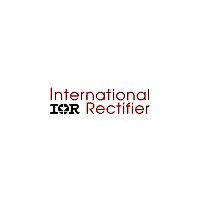IRS2500SPBF International Rectifier, IRS2500SPBF Datasheet - Page 12

IRS2500SPBF
Manufacturer Part Number
IRS2500SPBF
Description
PFC SMPS control IC designed to drive Boost or Flyback switching regulators providing high power factor
Manufacturer
International Rectifier
Datasheet
1.IRS2500SPBF.pdf
(22 pages)
Specifications of IRS2500SPBF
Channels
2
Topology
PFC IC
Application
SMPS/Lighting
Io+ (ma)
500
Io- (ma)
500
Over Current Protection
Yes
Vbsuv+ / Vccuv+ Min (v)
11.5
Vbsuv+ / Vccuv+ Typ (v)
12.5
Vbsuv+ / Vccuv+ Max (v)
13.5
Vbsuv- / Vccuv- Min (v)
9.5
Vbsuv- / Vccuv- Typ (v)
10.5
Vbsuv- / Vccuv- Max (v)
11.5
T On Typ (ns)
60
T On Max (ns)
110
T Off Typ (ns)
30
T Off Max (ns)
70
Package
8-Lead SOIC
Part Status
Active & Preferred
Available stocks
Company
Part Number
Manufacturer
Quantity
Price
Company:
Part Number:
IRS2500SPBF
Manufacturer:
INF
Quantity:
7 190
www.irf.com
Application Information and Additional
Details
electrical appliances in order to minimize reactive
current losses in AC power transmission lines. The
degree to which an electronic circuit matches an
ideal purely resistive load is measured by the phase
shift (displacement) between the input voltage and
input current and the amount of current waveform
distortion. In other words how well the shape of the
input current waveform matches the shape of the
sinusoidal input voltage.
between real power and apparent power with the
maximum value of 1.0 representing a totally
resistive load where the current waveform shape
matches the voltage waveform shape exactly. The
distortion of the input current waveform is quantified
by the total harmonic distortion (THD), which is the
sum of all harmonic content of the waveform
expressed as a percentage.
phase shift and a THD of 0% representing a purely
sinusoidal input current waveform in phase with the
line voltage. The lower the power factor the more
current is needed to supply the same power to the
load, which results is higher conduction losses in
transmission lines. For this reason it is desirable to
have a high PF and a low THD. To achieve this, the
IRS2500 implements an active power factor
correction (PFC) circuit.
may be used in a Boost converter (Figure 8) or a
low power single stage Flyback converter for small
power supplies or LED drivers. The IRS2500
operates in critical-conduction mode (CrCM), also
known as transition mode. This means that during
each switching cycle of the PFC MOSFET, the
circuit waits until the inductor current discharges to
zero before turning the PFC MOSFET on again.
The PFC MOSFET is turned on and off at a much
higher frequency (>10KHz) than the line input
frequency (50 to 60Hz).
The power factor (PF) is defined as the ratio
An ideal power factor of 1.0 corresponds to zero
Power factor correction is required in many
The control method implemented in the IRS2500
Figure 8: Boost converter circuit.
(+)
(-)
LPFC
MPFC
DPFC
+
CBUS
DC Bus
12
LPFC is connected between the rectified line input
(+) and (-) causing the current in LPFC to increase
linearly. When MPFC is turned off, LPFC is
connected between the rectified line input (+) and
the DC bus capacitor CBUS through diode DPFC.
The stored energy in LPFC is transferred to the
output, supplying a current into CBUS. MPFC is
turned on and off at a high frequency and the
voltage on CBUS charges up to a specified voltage.
The voltage feedback loop of the IRS2500
regulates the output to the desired voltage by
continuously
adjusting the on-time of MPFC accordingly. If the
output voltage is too high, the on-time is decreased
and if it is too low, the on-time is increased. This
negative feedback control loop operates with a slow
loop speed and a low loop gain such that the
average inductor current smoothly follows the low-
frequency line input voltage to obtain high power
factor and low THD.
The loop speed is intentionally slow with respect to
the AC line frequency so that there is no
appreciable change in the on time during a single
line half cycle. This allows the current to follow
shape of the sinusoidal voltage.
Figure 9: Sinusoidal line input voltage (solid line),
triangular PFC Inductor current and smoothed
sinusoidal line input current (dashed line) over one
half-cycle of the AC line input voltage.
Corrections to the output voltage therefore require
several line cycles. With a fixed on-time, and an off-
time determined by the inductor current discharging
to zero, the result is a system where the switching
frequency is free-running and constantly changing
from a high frequency near the zero crossing of the
AC input line voltage, to a lower frequency at the
peaks (Figure 9).
crossing), the inductor current will increase only a
small amount and the discharge time will be short
resulting in a high switching frequency. When the
input line voltage is high (near the peak), the
inductor current will charge up to a much higher
When the switch MPFC is turned on, the inductor
When the line input voltage is low (near the zero
V, I
monitoring
the
© 2012 International Rectifier
DC
IRS2500S
output
t
and













